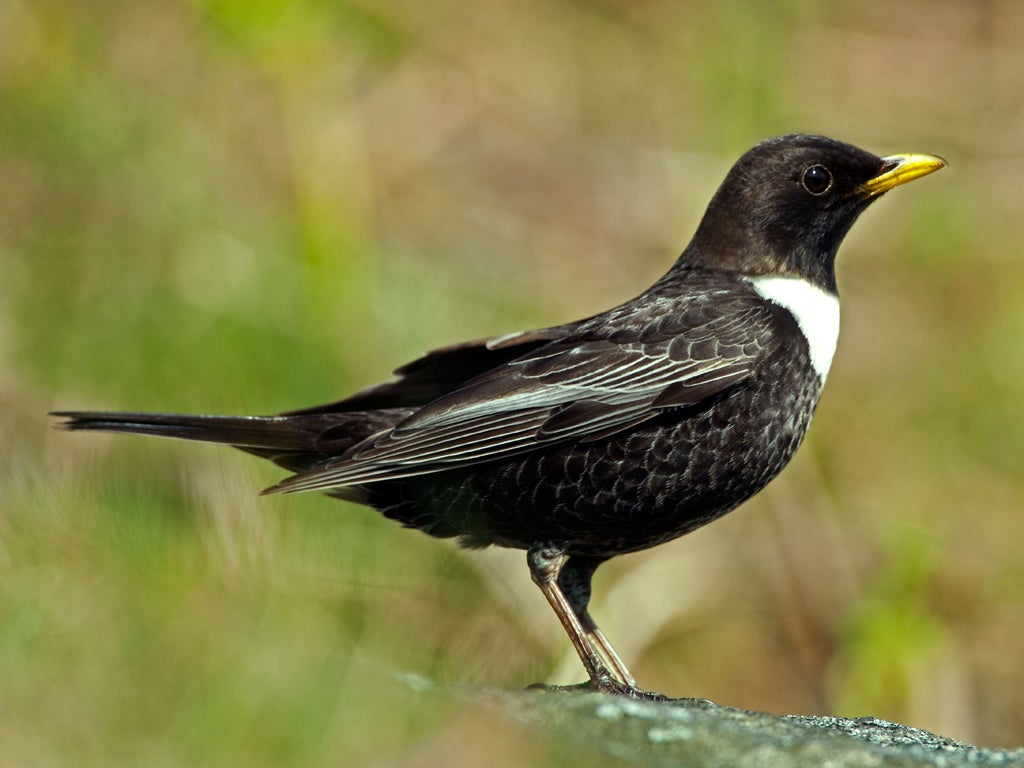How the sight of flocks of ring ouzels helps to turn autumn into the new spring
Many other winter migrants are arriving right now, such as Scandinavian finches

This is about a slight thing, and slight things are hard to write about, because part of you feels you shouldn’t be wasting words on anything which is less than of major importance; but most of the fabric of human life is made up not of great events, but of minor occurrences, and I feel that sometimes they should be written about too, and indeed celebrated.
It concerns an aspect of the present season, which a birdwatcher friend once suggested to me was spring in reverse, at least in bird terms: for just as our spring migrants from Africa and the south – the willow warblers, the swallows, the cuckoos – pour into Britain largely in the month of April, so our autumn migrants from Scandinavia and points north and east, flood into the country largely in October.
For the past fortnight, the winter thrushes, the redwings and the fieldfares have been arriving in huge numbers. I saw my first redwing of the autumn at the weekend, and as many as a million may already be in Britain now; the fieldfares follow slightly behind. Both are strikingly colourful, the redwing like a smaller song thrush with a creamy eyestripe and russet flanks, the fieldfare burlier, like a resprayed mistle thrush with a grey head and rump and a chestnut back – that’s what identifies it when you see a flock of them in a field – and when you get up close, an exquisite throat of yellow-orange sprinkled with black dots.
Many other winter migrants are arriving right now, such as bright Scandinavian finches such as bramblings, while the wild swans, wild geese and wild duck, such as the teal from Russia, are also touching down. In another fortnight, the woodcock from eastern Europe, maybe another million of them, will drop into Britain and promptly disappear, going to ground in woodland and emerging only at night to feed in the fields.
It is indeed a migratory influx to compare with springtime, if not quite on the same scale, and the birds are coming here for our mild winter. But the autumn migrants which I thought most interesting last week were not arriving to stay, they were just passing through. They were ring ouzels, which are the least common and least familiar of our six regularly occurring thrushes. (Blackbirds, song and mistle thrushes are residents; redwings and fieldfares are winter visitors; ring ouzels are summer migrants like swallows.)
They resemble blackbirds with a bright, white crescent across their breasts and they are birds of hills and mountains. Dismayingly, they are falling in numbers quite severely now, and last year, the new Bird Atlas for Britain and Ireland revealed the full extent of their decline, which is by nearly a half in 40 years: they have vanished from 43 per cent of the 10km grid squares where they were recorded in the early 1970s. Nobody really knows why. The bird has gone from the lower hills where it used to be found, like Exmoor and the Shropshire Hills and the Clwydians in North Wales, so anyone who wants to see them has to go higher and higher, into the mountains proper.
As a result, most British birders who see ring ouzels at all now tend to see them on the coast, on migration, and this is what happened last week. Although our own ring ouzels departed for their North African wintering grounds two months ago, Scandinavian birds are travelling south right now; they would normally go straight down through France to their winter quarters in the Atlas Mountains of Morocco, but a North Sea depression and easterly winds swept big parties of them into southern England. Last Tuesday, there were large flocks visible especially on the Kent coast: there were 160-plus at St Margaret’s at Cliffe, between Dover and Deal, 250 flying out to sea from the South Foreland, and at Dungeness, there were more than 550, dropping out of the sky. These are unprecedented numbers, and birders who managed to catch a glimpse of them were thrilled. “It was a spectacular sight,” David Walker, the warden of the Dungeness Bird Observatory, told me. “Quite amazing.”
I know that there are far, far more important things happening around the globe, but somehow it seemed to me that it was worth stopping, if only for a moment, to mark this most minor occurrence, this slightest of happenings – the brief abundance in Britain of this charming bird which we are so sadly losing.
The natural world is full of surprises. This is a creature which, if you’re lucky, you’ll get a momentary look at, if you trek up into the mountains; yet in Kent one day last week, it was raining ring ouzels. And I know how slight that is, yet I can’t help celebrating.

Join our commenting forum
Join thought-provoking conversations, follow other Independent readers and see their replies